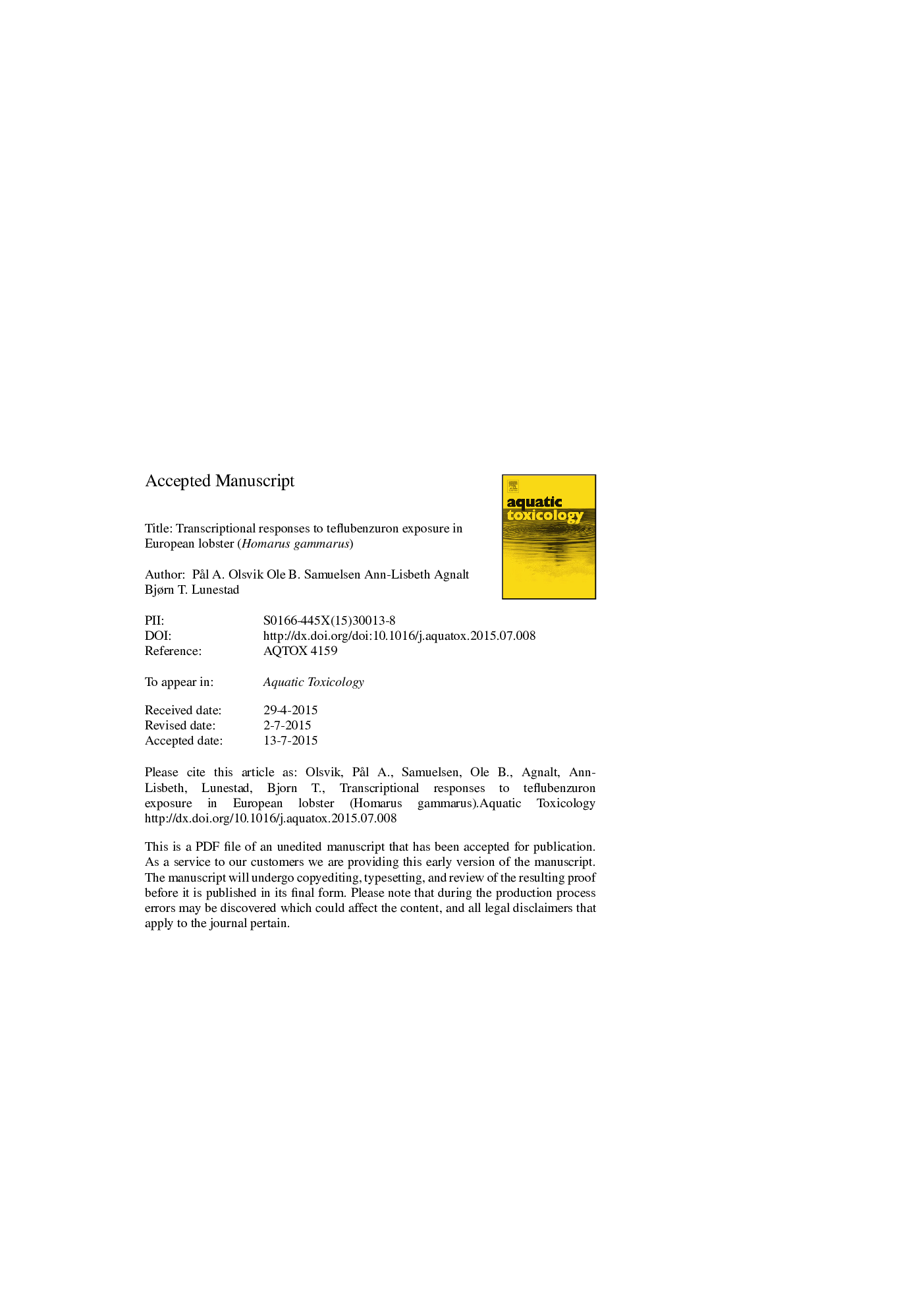| Article ID | Journal | Published Year | Pages | File Type |
|---|---|---|---|---|
| 6382154 | Aquatic Toxicology | 2015 | 38 Pages |
Abstract
Increasing use of pharmaceutical drugs to delouse farmed salmon raises environmental concerns. This study describes an experiment carried out to elucidate the molecular mechanisms of the antiparasitic drug teflubenzuron on a non-target species, the European lobster. Juvenile lobsters (10.3 ± 0.9 mm carapace length) were fed two environmentally relevant doses of teflubenzuron, corresponding to 5 and 20% of a standard salmon medication (10 mg/kg day), termed low and high dose in this study. After 114 days of dietary exposure, whole-animal accumulation of teflubenzuron was determined. One claw from each animal was collected for transcriptional analysis. Overall, exposed animals showed low cumulative mortality. Six animals, two from the low dose treatment and four from the high dose, showed exoskeletal abnormalities (claw deformities or stiff walking legs). Residual levels of teflubenzuron in juvenile lobster were 2.7-fold higher in the high dose (282 ng/g) compared to the low dose treatment (103 ng/g). The transcriptional examination showed significant effects of teflubenzuron on 21 out of 39 studied genes. At the transcriptional level, environmentally relevant levels of the anti-salmon lice drug impacted genes linked to drug detoxification (cyp3a, cyp6a2, cyp302a, sult1b1, abcc4), cellular stress (hsp70, hsp90, chh), oxidative stress (cat, gpx3) and DNA damage (p53), as well as molting and exoskeleton regulation (chi3l1, ecr, jhl1, chs1, ctbs, gap65, jhel-ces1) in claw tissue (muscle and exoskeleton). In conclusion, teflubenzuron at sub-lethal levels can affect many molecular mechanisms in European lobster claws.
Related Topics
Life Sciences
Agricultural and Biological Sciences
Aquatic Science
Authors
Pål A. Olsvik, Ole B. Samuelsen, Ann-Lisbeth Agnalt, Bjørn T. Lunestad,
